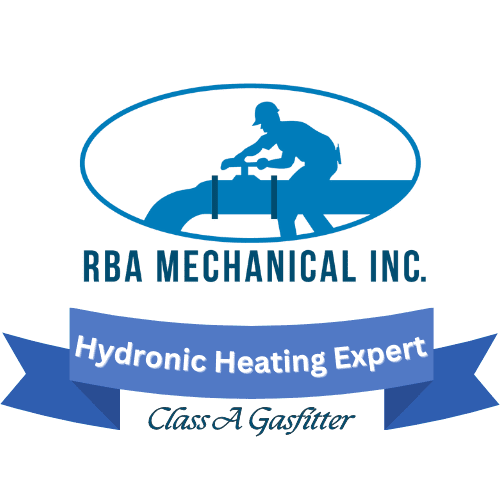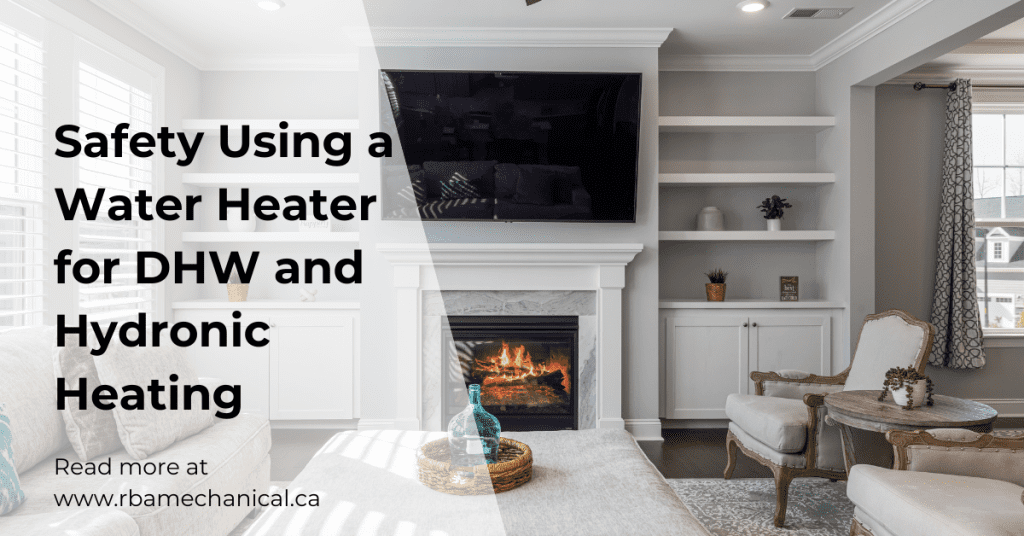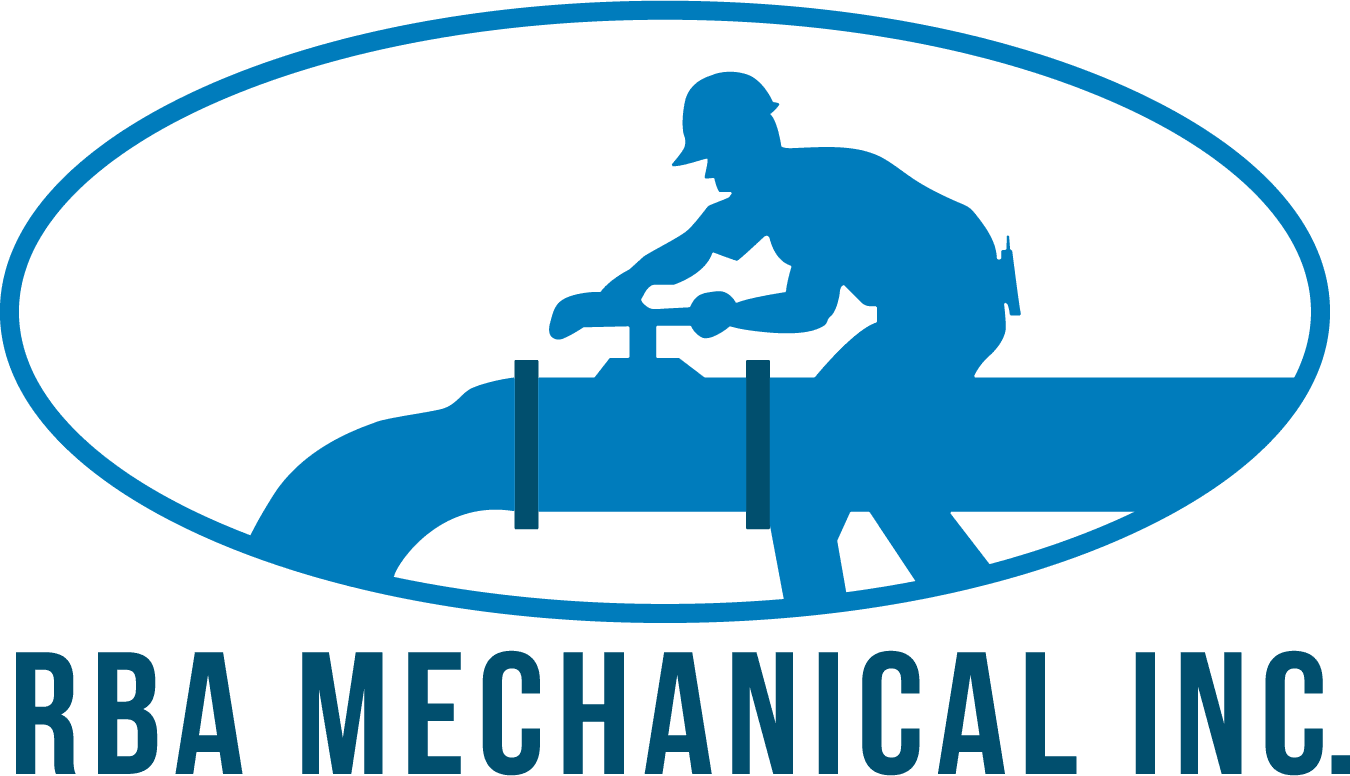Using a water heater for both domestic hot water and hydronic heating?
Prevent Legionella in hot water supply by physically separating the domestic water from your hydronic floor heating system.
Introduction to the concept of using a water heater for both domestic hot water and hydronic heating
Imagine stepping onto a warm floor on a chilly morning, the comfort of hydronic heating enveloping your space. Now, picture that same warmth extending beyond just cozy toes; it’s also providing you with hot water for your daily needs. Using a single water heater for both domestic hot water and small hydronic heating systems isn’t just convenient—it’s cost effective too!
However, while this dual functionality is appealing, it comes with its own set of challenges, notably the risk of Legionella bacteria lurking in your hot water supply. Understanding how to effectively manage these risks while enjoying the benefits can transform your living space into an oasis of comfort and safety. Let’s dive deeper into this fascinating concept and explore how to achieve that perfect balance between warmth and healthfulness in your home.
Understanding the risks of Legionella in hot water supply and how it can be prevented
Legionella bacteria thrive in warm water environments, making hot water systems a potential breeding ground. If left unchecked, these organisms can pose serious health risks. The inhalation of aerosolized droplets containing the bacteria can lead to Legionnaires’ disease, a severe form of pneumonia.
Temperature plays a crucial role in preventing Legionella growth. Keeping the hot water supply above 140°F (60°C) is essential as it inhibits bacterial multiplication. Regularly monitoring and adjusting your system’s temperature helps mitigate this risk significantly.
Additionally, sediment buildup in tanks encourages bacterial proliferation. Flushing your water heater periodically removes debris and maintains clean conditions.
Implementing physical separation between domestic hot water and hydronic heating systems further reduces exposure risks. This approach ensures that any contaminants remain isolated from drinking water supplies while providing peace of mind for homeowners concerned about public health safety.
The benefits of physically separating the domestic water from the hydronic floor heating system
Physically separating domestic water from your hydronic heating system offers numerous advantages. First and foremost, it enhances safety. By keeping the two systems distinct, you significantly reduce the risk of cross-contamination.
This separation also improves efficiency. When each system operates independently, energy consumption can be optimized for specific needs—heating water for showers versus warming floors. This targeted approach often results in lower utility bills.
Another perk is that maintaining a separate setup allows for tailored temperature control. You can set different temperatures according to usage without compromising comfort, safety, or performance.
Additionally, this method helps mitigate risks associated with Legionella bacteria. When hot water stays at an optimal temperature solely for domestic use, it reduces stagnant conditions where bacteria might thrive. A hydronic heating system typically operates on a seasonal basis, during which the fluid within the system can become stagnant when not in use.
Having distinct systems simplifies repairs and maintenance tasks since any issues in one won’t affect the other directly.
Different methods of physically separating the two systems
An effective approach is to utilize a Combi Water Heater (combination). These water heaters are equipped with a built-in heat exchanger that automatically separates the two systems. It is important to ensure that it is used for both domestic hot water and hydronic heating purposes.
Another method for separating domestic hot water from hydronic heating is the use of a seperate heat exchanger. This device transfers heat without allowing the two fluids to mix, ensuring safe and efficient operation.
The third option is employing a dedicated boiler for hydronic systems. By having a separate unit, you can maintain optimal temperatures for both applications while minimizing contamination risks.
Each of these methods offers unique advantages for maintaining safety and efficiency in your home’s plumbing setup.
Factors to consider when choosing a water heater for dual use
It is important to know that a water heater cannot be used for just hydronic heating alone, it must be used for both purposes to ensure warranty compliance on the water heater, as well as health and safety.
When selecting a water heater for dual use, efficiency is paramount. Look for models with high energy ratings to reduce costs and environmental impact.
Consider the capacity you need. Larger households may require a tank that can supply enough domestic hot water while simultaneously supporting hydronic heating demands.
The type of system matters too. Tankless heaters provide endless hot water but may struggle during peak usage times compared to traditional tanks.
Don’t overlook installation requirements either. Some units might need additional plumbing or electrical work, influencing your overall budget and timeline.
Check compatibility with existing systems. Ensuring seamless integration will save headaches down the line and maintain optimal performance in both areas of use.
Maintenance and safety precautions for a dual-use water heater
Maintaining a dual-use water heater is essential for efficiency and safety. Regular inspections can help catch potential issues early. Check for leaks around connections and valves, as even minor drips can lead to bigger problems down the line.
Flushing your tank at least once a year helps remove sediment buildup. This not only prolongs the life of your unit but also ensures optimal performance in both hydronic heating and domestic hot water supply.
Pay attention to temperature settings as well. Keeping your heater at 140°F (60°C) is effective in preventing Legionella growth while ensuring comfortable domestic hot water temperatures.
Always follow manufacturer guidelines for maintenance schedules and procedures. Safety should never be overlooked; consider installing pressure relief valves if they aren’t already included, adding an extra layer of protection against possible mishaps in operation.
Conclusion
When considering a water heater for both domestic hot water and hydronic heating, it’s essential to understand the intricacies involved. Using one system for dual purposes can save space and reduce energy consumption, but it comes with its own set of challenges. The risk of Legionella contamination is significant in any hot water supply, making prevention strategies critical.
By physically separating your domestic hot water from your hydronic floor heating system, you not only mitigate this risk but also enhance the efficiency of each system. Methods such as using dedicated tanks or heat exchangers allow for safe operation without compromise.
Choosing the right type of water heater involves assessing factors like capacity, energy source, and compatibility with existing systems. Maintenance plays a crucial role in ensuring longevity and safety; regular checks are vital to keep everything running smoothly.
Staying proactive about these considerations will lead to better performance in both your domestic hot water needs and your comfortable home environment through effective hydronic heating solutions. A well-planned approach ensures that you enjoy all the benefits without exposing yourself or your loved ones to unnecessary risks.
Order a heat exchanger package today
Request Service or Get a Free Quote
Use the links below to browse more tips and advice or use the back button on your browser to return to the previous page.


